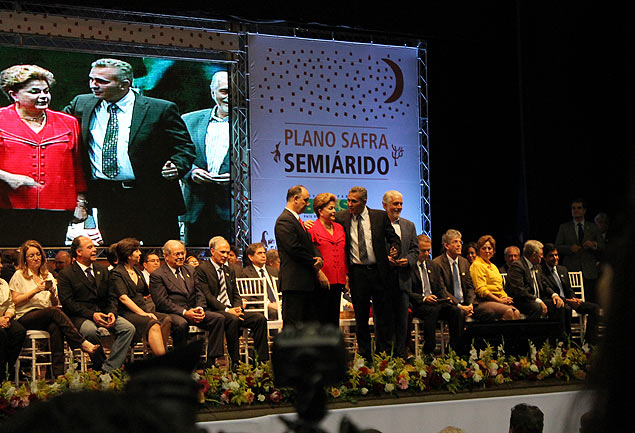Latest Photo Galleries
Brazilian Markets
16h19 Bovespa |
+0,72% | 125.094 |
16h43 Gold |
0,00% | 117 |
16h26 Dollar |
-1,04% | 5,1956 |
16h30 Euro |
+0,49% | 2,65250 |
ADVERTISING
A Pillar for Rousseff, the Northeast of Brazil Maintains Booming Economy
10/07/2014 - 08h49
Advertising
GUSTAVO PATU
EDUARDO CUCOLO
FROM BRASÍLIA
The main pillar of President Dilma Rousseff's votes for reelection, the northeast region of Brazil is not suffering the same economic downturn opposition candidates are using to attack her.
According to calculations made by the Central Bank, the northeastern economy grew 2.55% in the second quarter, compared to the first, which had already shown growth of 2.12%.
These rates are unparalleled in the rest of the country. None of the other regions had two consecutive quarters of growth, and rates, even when positive, were much more modest.
According to calculations done by IBGE (Brazilian Institute of Geography and Statistics), the country's economy shrank 0.2% from January to March and 0.6% from April to June. An international convention states that two consecutive drops are a symptom of recession.
Data from BC and IBGE don't permit what distinguishes the Northeast results from those of Brazil to be detailed, but help to understand why critics of Rousseff's economic policy have a smaller echo in the region.
There, the PT candidate had 50.5% of the valid votes, against 28.2% for Aécio Neves (PSDB) and 18.1% for Marina Silva (PSB). In the nine northeastern states, Rousseff won all but Pernambuco.
At least part of the explanation lies in the weight of public administration in the region's economy. Depending on the state, the weight of the services provided by the governments - federal, state and municipal -in the local income varies from 18%, similar to the national average, up to 32%.
This means that increases in spending on things like welfare, healthcare, education and the Bolsa Família program have had a much greater impact in those places than, for example, in São Paulo, where public administration accounts for only 9% of gross domestic product.
The weight of the state is even greater in the North, where Dilma was also widely victorious, with 59.6% of valid votes. In this case, the ratios are inflated by the small size of the population and economy of the region.
While the Northeast is home to 28% of the population and 13% of the country's GDP (according to the most recent calculations of the regional GDP in 2011), the North represents only 8% and 5%, respectively.
Translated by JILL LANGLOIS
Read the article in the original language
| Nelson Barros Neto/Folhapress | ||
 |
||
| President Dilma Rousseff attends a meeting together with Northeast governors |



